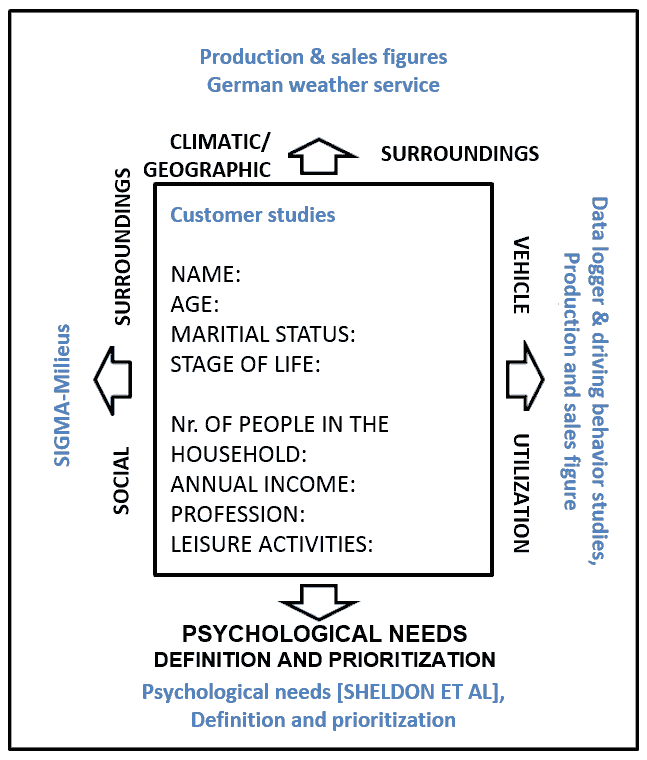Create User Profiles.
Derivative and market-specific image of the customers.
Why.
Include characters which are oriented on the real customer to help identify a realistic base that corresponds to the later customer group.
What.
Create data-based descriptions of fictitious characters in five steps that correspond to the derivative- and market-specific customer profiles.
How.
Potential user group as well as structured and unstructured customer feedback
In a first step, collect the necessary data (see: Input) from the appropriate sources.
Carry out the following steps within the framework of a requirement and development workshop:
- Collect production and sales figures and specify the market.
- Define the climatic and geographic surroundings.
- Define the social environment, use behavior and the use of vehicles.
- Examine emotional behavior and prioritize psychological needs.
In the last step, create an illustration in form of a profile. You can use the data-based character for the personalization of realistic usage scenarios. A summary that includes the data base of the customer profiles allows for a more in-depth questioning and analysis of the data for the technical design of functions in further stages of development (Story and Storyboard).
Customer profiles, characters, use cases, database with evaluated customer data.
Insights
- Often there are differences between marketing persons and real customers; therefore it is important to obtain a data-based image of the customer.
- The procedure of creating a customer profile encourages the reflection of interaction from the customer's point of view (vs. developer's point of view) and supports the derivation of market-specific requirements and the safeguarding of the product properties.
- Personal photos and a fictitious name help to create a credible image of a "typical customer".
- List the data sources to encourage acceptance by the engineers.
References
Adlin, P., Pruitt, J. (2010). The Essential Persona Lifecycle - Your Guide to Building and Using Personas. Burlington, USA: Elsevier Inc.
Cooper, A., Reimann, R., Cronin, D. (2007). About Face 3 - The Essentials of Interaction Design. Indianapolis, USA: Wiley Publishing Inc.
Nielsen, L. (2007). 10 Steps to Personas.
Steward, M., Francois, J., Zhang, H., Mc Crickard, D.S. (2011). Persona-Storyboard Fusion: A hybrid approach to improving design artifacts. In Proceedings of HCI International 2011 (HCII '11), Orlando FL, p.77-81.





